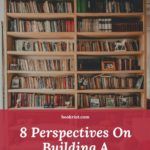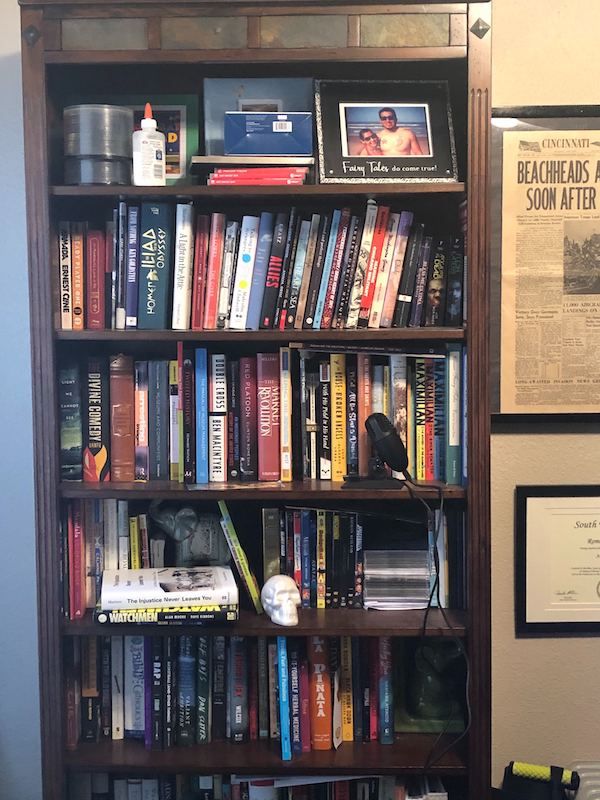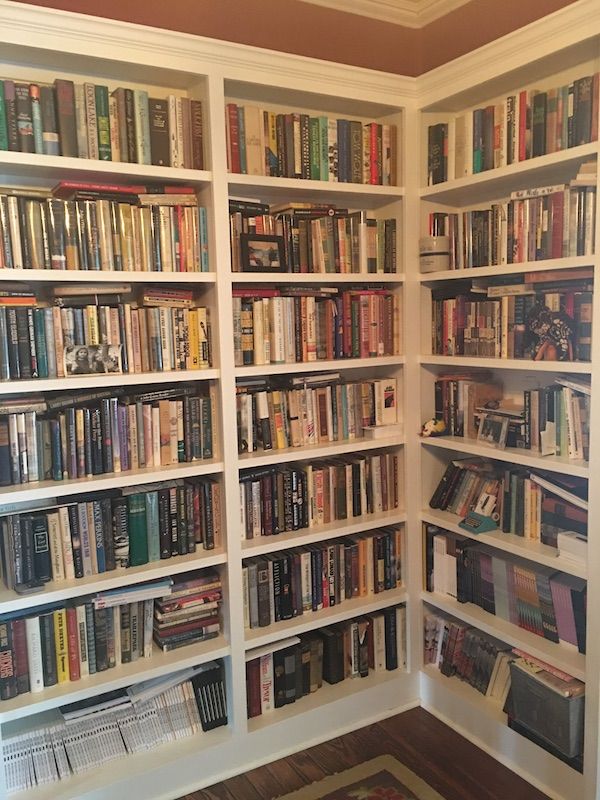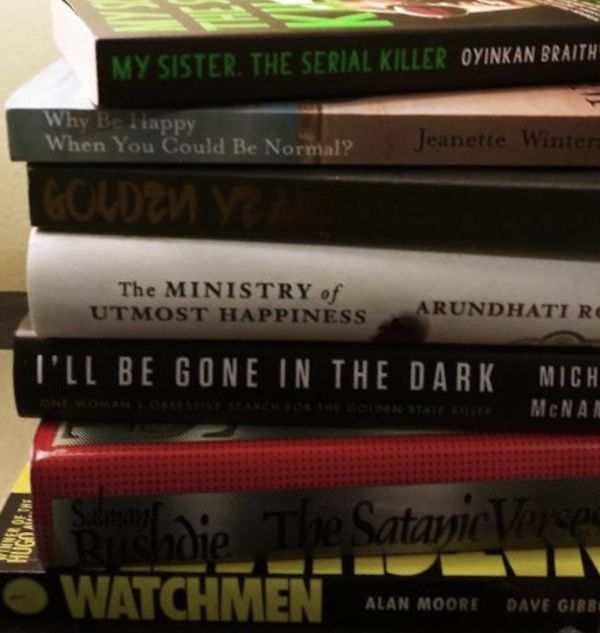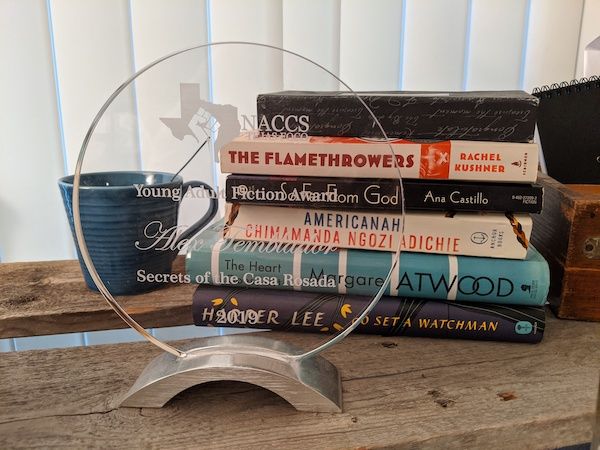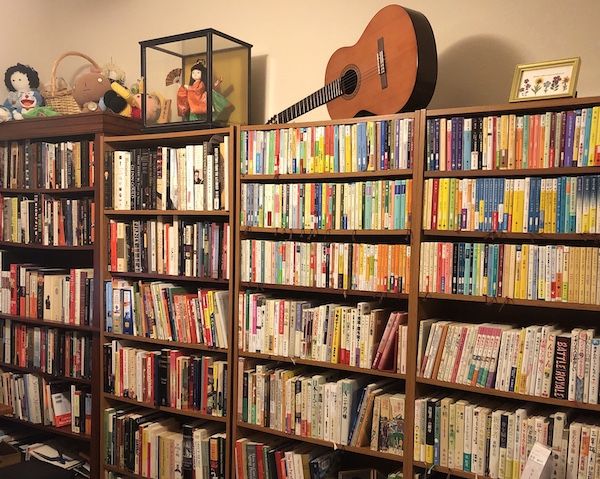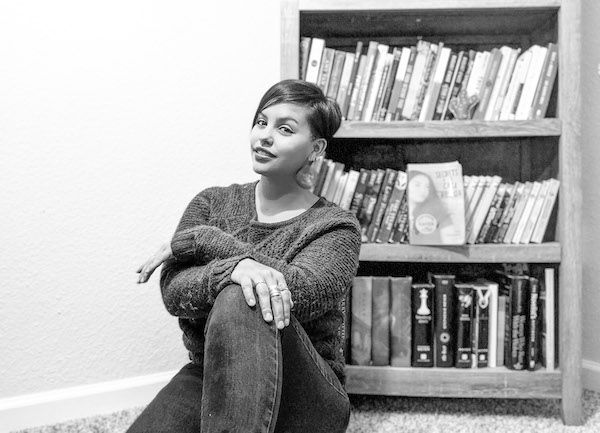Time capsule. A reflection of who I am as a person and author. My comfort zone. My life, my livelihood, my beautiful mind! My escape room. A world of unlimited discovery and potential. Eclectic, messy, approachable—just like me. Truly, for all of us bookworms, a personal library is more than a room, a collection, or something pretty to look at—it’s the heart of our homes. And our books—with the exception of ebooks and audiobooks—are tangible objects that deserve a thoughtful space of their own. So how do we make sure we’ve created a personal library that keeps our books safe and somewhat orderly? More importantly, how do we create a place where we can spend hours discovering and dreaming? For inspiration, I asked each of these eight readers to share their thoughts on building, organizing, and making the most of a personal library.
How To Build a Personal Library: The Space
Not surprisingly, everyone’s personal library looks a little different. For many of these readers, books don’t all live together in a single place. “They’re spread throughout my house which is exactly how I like it,” author and freelance writer Alex Temblador (Secrets of the Casa Rosada) told me in an email. Likewise, Lori Feathers, co-owner and book buyer of indie bookshop Interabang Books, wrote, “My personal library space is every nook, cranny and available surface of our 1350 square foot home, including stacks on the floor in our study.” That said, even readers whose books are scattered in multiple places still have a significant part of their collection intentionally placed on bookshelves. Guests of Seattle-based reader Meera George are greeted by a select group of books on cube-shaped shelves in her entry way. Romeo Rosales, Collections and Acquisitions Librarian and fellow Book Riot contributor, uses several rooms “to read books and stack books and hoard books,” but splurged a few years ago on a bookshelf that’s now “tucked into a corner of our living room and has six shelves that are jam-packed with books from all genres and styles.” Other readers have designated a single space in their homes for their libraries. Tokyo-based reader Debbie Rowland, who is preparing to relocate to Dallas, is slowly sending all of her books to a room in her mother’s Dallas-area home. “A few years ago, I decided to gather the shelves of books that were scattered over five rooms in the house into one room and make it the library I had always dreamed of having.” Author David Langlinais (Duck Thief and Other Stories, What Happened to All the Dogs? And Other Stories) told me his library is also the writing room where he works, surrounded by floor-to-ceiling shelves. When reader Cindy Gordon remodeled her home in Argyle, Texas, books were a priority. “I insisted on a book room,” she told me. “I spend every morning in there, pets at my feet, coffee in hand, watching the sky change colors as the sun rises.” But she and her pets aren’t the only ones who enjoy her personal library. “We put the room adjacent—and open to—the kitchen so that at parties, people could also wander in there to sit and chat.”
How many books make up a personal library?
The best part of a personal library is, of course, the books. I wanted to know how many books these readers have and how they build and cull their collections.
Number of Books
The quantity of books in these readers’ libraries range from 100 to 2,000, depending on many things, including phase of life. Author Temblador owns about 100 now, but told me, “My goal is to have a huge library when I buy a home one day.” Although George and her husband own a home in Seattle, her book collection is similar to Temblador’s—about 150. “Because space and humidity are issues here in Seattle,” she told me, “my book-buying habit has been curbed.” Other readers have been able to collect thousands of books. Rowland’s Tokyo library is dwindling, but her Dallas library has grown to about 1,000 books in print and “an embarrassingly large collection of books for Kindle.” Her print collection includes works that belong to her entire family, but she also admits to having a book-buying addiction. “You can never have too many books or friends,” she told me. As for her Kindle collection, she said, “I’ve spent the last decade in a country where it’s difficult to find English-language books.” Out of all the readers, author Langlinais has the largest collection of print books. “I just did a major cull, so I’m now down to about 2,000.” It’s his passion for books that has led him to amass a collection this large. He’s held on to most of the books he bought when he was younger and admits he has a difficult time parting with any of them. “Each one is a part of my past,” he told me. Langlinais also keeps several copies of certain titles. “If I love a book enough, I’ll find a first edition of it. I don’t like to lend out my first editions, so I might keep a paperback on hand in case I want to share it. Or, if I really like a book, I might buy several versions of the same book.” For bookstore owner Feathers and librarian Rosales, professional habits affect their numbers. Feathers, who owns around 500 books, told me, “Being the book buyer for a bookstore is like having a sweet tooth and living in a candy shop.” She spends hours poring over publishers’ catalogs and is constantly learning about authors, settings and subjects that intrigue her. “Every day I discover a book that I need to have,” she told me, “and I seldom deny myself.” Rosales, who owns around 300 books, told me, “I collect, purchase and acquire new books for a living.” It’s a habit that bleeds over into his personal life, too. “I can’t even go to Target without looking for new books to purchase,” he said. “It’s both a blessing and a curse.”
Selection Process
Not surprisingly, most readers just buy what they love. George, Gordon, and Temblador all told me that when they read a book from a local library and fall in love with it, they will purchase it. George is also motivated to purchase books with gorgeous covers and to shop at indie bookstores when she’s traveling. Temblador told me she buys books for special occasions, too—“like buying my very first first-edition book or when I’m traveling on long-haul flights overseas.” The author added, “Other times, I buy my author friends’ books to support them in their journey.” Temblador isn’t the only reader whose profession significantly shapes her purchasing. Author Langlinais collects works that are similar to what he writes—literary fiction and short story collections. Houston-based reader Vicki Seldon is a classical musician and has an entire section of biographies about musicians. Interabang owner Feathers told me, “I’m very committed to ensuring that Interabang’s shelves include gems that are little known or underappreciated. These make up a big part of my personal library as well.” And Rosales told me that as a librarian, collecting books is “definitely a science and a process.” While Rosales and his wife are most passionate about nonfiction, he does have a collection of novels by Latinx authors. “The book publishing industry is saturated with white authors, so I do what I can to continue learning about my culture, my history, and my people to spread the word and love for others to also enjoy.” Similarly, Seldon, who teaches at a historically black university and wasn’t exposed to literary works by authors of color in her early life, is intentional about her purchases. “My personal library has a substantial collection of fiction and nonfiction by black authors that I have collected over the past twenty or so years. Now, I am more likely to buy something by a person of color first.” Rowland’s practical side tends to control her decision-making process when she’s shopping for books. “I rarely pay regular price for a book or buy new books even, which means I don’t always buy what I want to read most,” she told me. “But it’s always a nice feeling to find that book I’ve been looking for at a discount.” No matter the motivation, the personal library selection process is summed up beautifully by Gordon: “It’s about creating a security blanket of books that have moved me in one way or another so that if I think I need one of them, they are right there, waiting for me.”
Culling Process
For book lovers, letting go of a book can be heartbreaking. “When I was a kid, if I left a book on the ground or ruined its spine, my dad would remind me that books are considered the temple of the Hindu goddess, Saraswati,” George told me. “We’re not even Hindu but the idea that books are sacred really stuck.” Yet culling a personal library is inevitable—whether it’s because of a move or to create more room on the shelves. Most of the readers I asked told me they usually decide to cut books that, as Rosales described it, “don’t have a super special place in my heart.” If they can’t find a place to sell or donate their books, readers will give them to friends, which makes the loss easier to swallow. “I found a writer right out of college who loves to read,” Langlinais told me. “I gave her two big boxes brimming with a lot of my favorites. I love giving away books to those I know will cherish them as I do.”
How To Organize a Personal Library
“There is no rhyme or reason to the way I’ve organized my books,” Temblador told me. And she’s not alone. Gordon told me she organizes “by whim. I love looking at my shelves and seeing Donna Tartt next to Barbara Brown Taylor.” But even the readers who organize arbitrarily, or believe they haven’t organized their books at all, are intentional about grouping some of their books. George told me she keeps a few favorite books, including author-signed copies, on her nightstand: Temblador told me, “The book stack on my desk reflects books that I admire from an author’s standpoint. I think of that stack of books as my ‘author goals’—I want to publish books that are as beloved by others as those books were to me.” Other readers have loose rules. Langlinais often shelves his books according to height. Rosales keeps his nonfiction and fiction separate. Feathers sometimes organizes by topic, but other times finds that her books end up ordered in the chronology she read them. But a couple of readers described definitive methods of organization. Seldon categorizes the fiction books in her Houston library by paperback and hardback, then sorts each one alphabetically. Her nonfiction, on the other hand, is grouped by category. Rowland created this system in her bilingual personal library: “My collection is divided into English and Japanese sections and each of those sections is divided into fiction and nonfiction. The Japanese fiction section is actually in the equivalent of alphabetical order by author’s last name, and my English nonfiction is loosely separated into categories.” When it comes to sharing personal library space with family members, readers like giving their children their own shelves. Spouses and partners split shelf space in a variety of ways. Feathers told me this about sharing a personal library with her boyfriend—and the other members of the family: “Our reading interests rarely overlap, so there is never a question, really, about which books are his and which are mine. The other two residents of our home—English bulldogs Gordito and Botero—are not readers, thankfully. But they are great cuddle companions for reading.”
Keeping Track of Books in a Personal Library
Most of these readers don’t currently use personal library tracking apps to keep track of what’s on their shelves, although they have thought about how apps might help. While Langlinais knows where all of his books are if he needs one, he sometimes wishes he used an app so he could remember which first editions he owns when he’s book shopping. Rowland told me that once she moves back to the States, she plans to use Goodreads to record all of the books she owns, plus the ones she’s culled. Feathers opts for a more traditional route: “I do keep a ‘b.o.b.’—book of books—in which I faithfully note the title, author, and date finished for each book that I’ve read.” When I asked Rosales if he could share any tips for tracking based on his expertise as a librarian, he told me, “If you want to be a real nerd, you can do what I do for work and compile a spreadsheet of your book purchases. Break it down by physical, digital, audio/e-audio and keep track of your weekly/monthly budget. Track how much you spend [on] every purchase and all that good stuff.”
Personal Library: The Passion
“Going through the titles of the books on my shelves is like flipping through an album,” George told me of her Seattle library. “I can tell you where I bought almost any book and when and what was going on in my life when I read it.” This was a sentiment I heard from many of the readers I interviewed. “It’s where my past meets my present and future. It grows with me, or I with it.” Langlinais wrote in an email, “I like to smell the pages and think I’m momentarily transported back to that time.” Temblador told me she tends to “read about things I’m trying to figure out in my own life and if you looked through my library, you’d discover so many wonderful layers of who I am, who I’ve been, and who I want to be as a person and an author.” Seldon told me she focuses on how her library affects her in the present: “I tend to think about an individual book or books that are impacting me at the moment.” Gordon also takes time to enjoy the moment—and share it with others. “I get a deep sense of happiness when I recommend books to other people who then read them,” she told me. “When people see my library, they know they have found a fellow reader and a connection is born. When guests take time to peruse and ask me questions about a book, I come alive.” On the other hand, Rowland finds herself thinking a lot about the future. She admits that while her books are her “prized possessions” and a reflection of who she is, “there is also some guilt there because it sometimes feels like I spend more time buying new books for my collection than I do reading the books I already have. [I’m] hoping to change the balance someday.” In a perfect example of past meeting future, bookstore owner Feathers told me as a preschooler, she used to organize and display all her books and play librarian. “My books are the most important inanimate thing in my life,” she told me. Similarly, Rosales’s childhood memories are inextricably linked to his current passion for his collection. “It’s a constant reminder that without books I would be nothing. I grew up with nothing but my mother always took my sisters and me to the library. We always had the worlds inside of books and that has always been something I think back to when I look at my personal library,” he told me. “I get very emotional when I think about how special books are and how special my mom is to me.” For George, her library represents personal healing: “About seven years ago, I was in an awful marriage, new to a city where I didn’t know a soul, and working at a job I hated. I struggled a lot that year and would call my father, a psychiatrist, for advice on how to cope. He’s a reader, like me. And instead of analyzing me or offering psychiatric advice, he sent me Man’s Search For Meaning by Viktor Frankl. It changed how I viewed my circumstances and what I valued in life. After my divorce, so many friends consoled me or reached out to me by giving me or recommending books. Now, when I’m down in the basement and I see those titles, I think about the person who cared enough about me or who just got me so well that they knew exactly what I needed to hear (or read more like it) to get through the worst part of my life.” If you’re like me, you’ve been nodding along with the thoughts of these readers, happy that you’re not alone in your passion for books. Now it’s your turn to look at your personal library. Is it filled with the works you love, and arranged in a way that works for you? More importantly, does it inspire you? If not, don’t worry—we all collect books like we collect experiences: one at a time.
